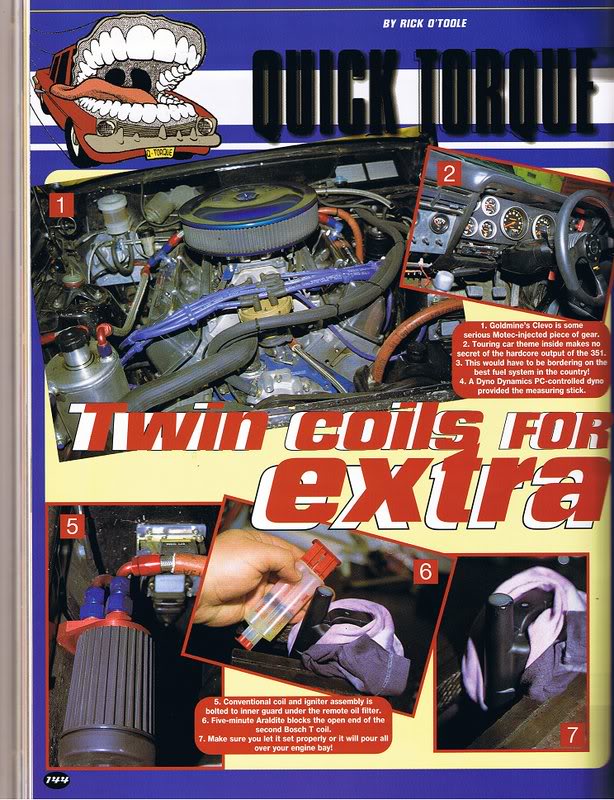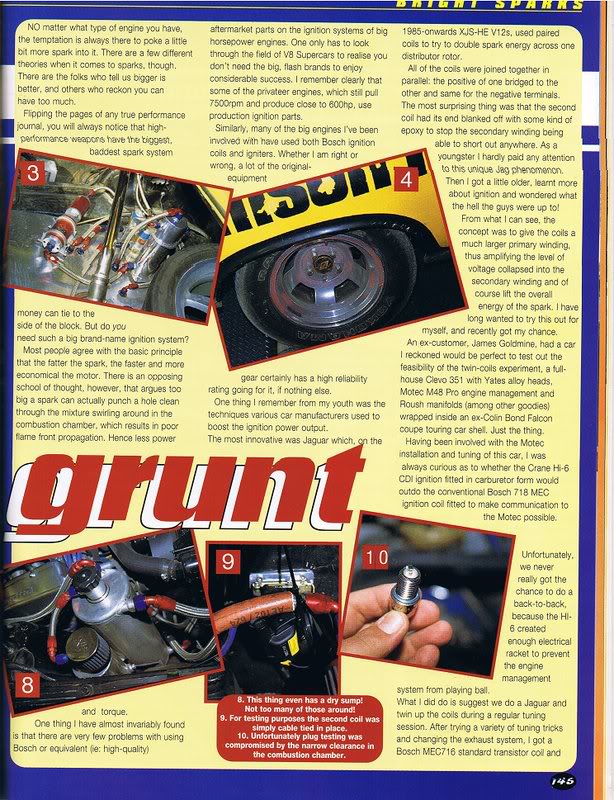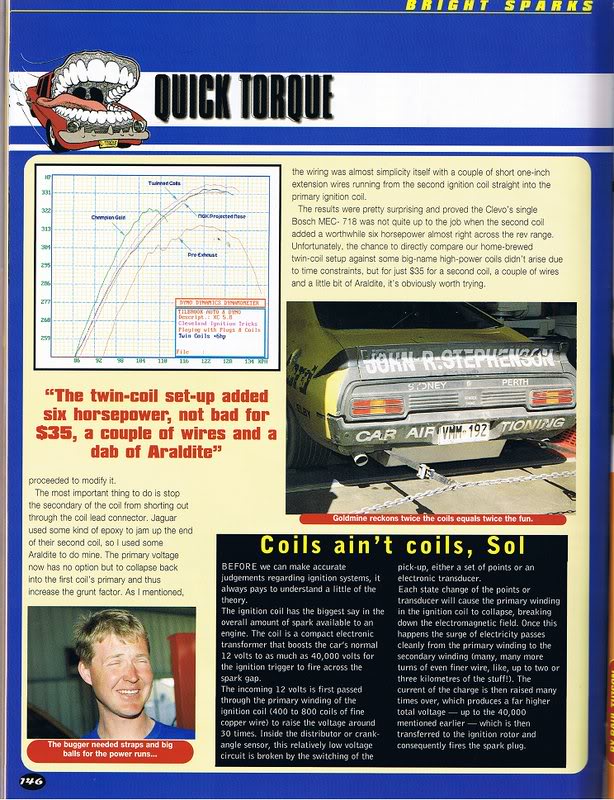


Posted 02 March 2009 - 10:00 PM



Posted 02 March 2009 - 10:00 PM
Edited by Rockoz, 02 March 2009 - 10:04 PM.
Posted 02 March 2009 - 10:01 PM
Posted 02 March 2009 - 10:04 PM
Even in a set of points, we are only taking about fractions of an ohm, connecting wire- add another fraction of an ohm, cant see that is going to make much difference.Its the total circuit that matters in this case.
What causes the main problem is the parasitic wiring resistance outside the coil.
Really this is the part having trouble with, the inductance "in front" of this coil remains the same, so how can the rise time decrease.The single coil current stays the same at saturation but the rise time of the current is faster meaning that you get to saturation quicker so better spark ensues.
Posted 02 March 2009 - 10:07 PM
Posted 02 March 2009 - 10:09 PM
Posted 02 March 2009 - 10:29 PM
Edited by torbirdie, 02 March 2009 - 10:33 PM.
Posted 02 March 2009 - 10:32 PM
Posted 02 March 2009 - 10:32 PM
Posted 02 March 2009 - 10:40 PM
Did I miss something:You might want to read the Volvo bit again.
Posted 02 March 2009 - 10:46 PM
Did I miss something:
Posted 02 March 2009 - 10:54 PM
yes, I see what you mean...he added just a wire between the two ht terminals? (however that was achieved), another puzzle to solve, how did that cause the observed effect!Yes.
"So I grabbed a coil (just a normal 12v resistor coil) and ran a wire from the output post to the output of the existing coil and left the other terminals disconnected."
Posted 02 March 2009 - 10:57 PM
Posted 02 March 2009 - 11:09 PM
Posted 03 March 2009 - 02:58 AM
Simple fact is when i had this twin coil system setup running with splitfire plugs it would run very differently when you took the 2nd coil out of the circuit
Posted 03 March 2009 - 08:06 PM
Posted 03 March 2009 - 11:57 PM
Posted 03 March 2009 - 11:59 PM
I think if it were that good then every HZ and VB would have had this set up with the problems they faced with emissions one would think.
Posted 04 March 2009 - 04:47 AM
Posted 04 March 2009 - 08:19 PM
Don't be stuffed mate! You've got me stuffed in the tacho thread.
Posted 04 March 2009 - 08:54 PM
This whole thread has me stuffed
However, since I've got nuthin of my own, here's something that got me thinking from Wikipedia discussing the instant when the points open.
At the same time, current exits the coil's primary winding and begins to charge up the capacitor ("condenser") that lies across the now-open breaker points. This capacitor and the coil's primary windings form an oscillating LC circuit. This LC circuit produces a damped, oscillating current which bounces energy between the capacitor's electric field and the ignition coil's magnetic field. The oscillating current in the coil's primary, which produces an oscillating magnetic field in the coil, extends the high voltage pulse at the output of the secondary windings. This high voltage thus continues beyond the time of the initial field collapse pulse. The oscillation continues until the circuit's energy is consumed.
Now assuming this is correct (and it's on the net so it must be) I'm thinking that maybe the additional current from the extra coil into the LC combo may cause a higher amplitude/longer duration in the oscillating current giving a better spark and all that.
What do you reckon?
Posted 04 March 2009 - 09:56 PM
Nice simple rule. I like itFor points systems you could use the minus-minus-minus rule to verify ie. if the minus (negative) contact point is minus material (pitted, the + one picking up material) then the condensor is minus capacity (too small)
Posted 04 March 2009 - 11:15 PM
Posted 05 March 2009 - 01:55 AM
Posted 05 March 2009 - 03:24 AM
Was this latest effort just using the conventional points setup, with original resistance wire powering both coils etc?I've got mine up and running again...however there isn't a great deal to report..and the only result is little bit "non scientific"...I am waiting to see if economy has changed. The non scientific results are that with the coil hooked up and the throttle blipped the fan belt would squeal for an instant...but not when it operates one coil....completely non quantifiable
0 members, 1 guests, 0 anonymous users